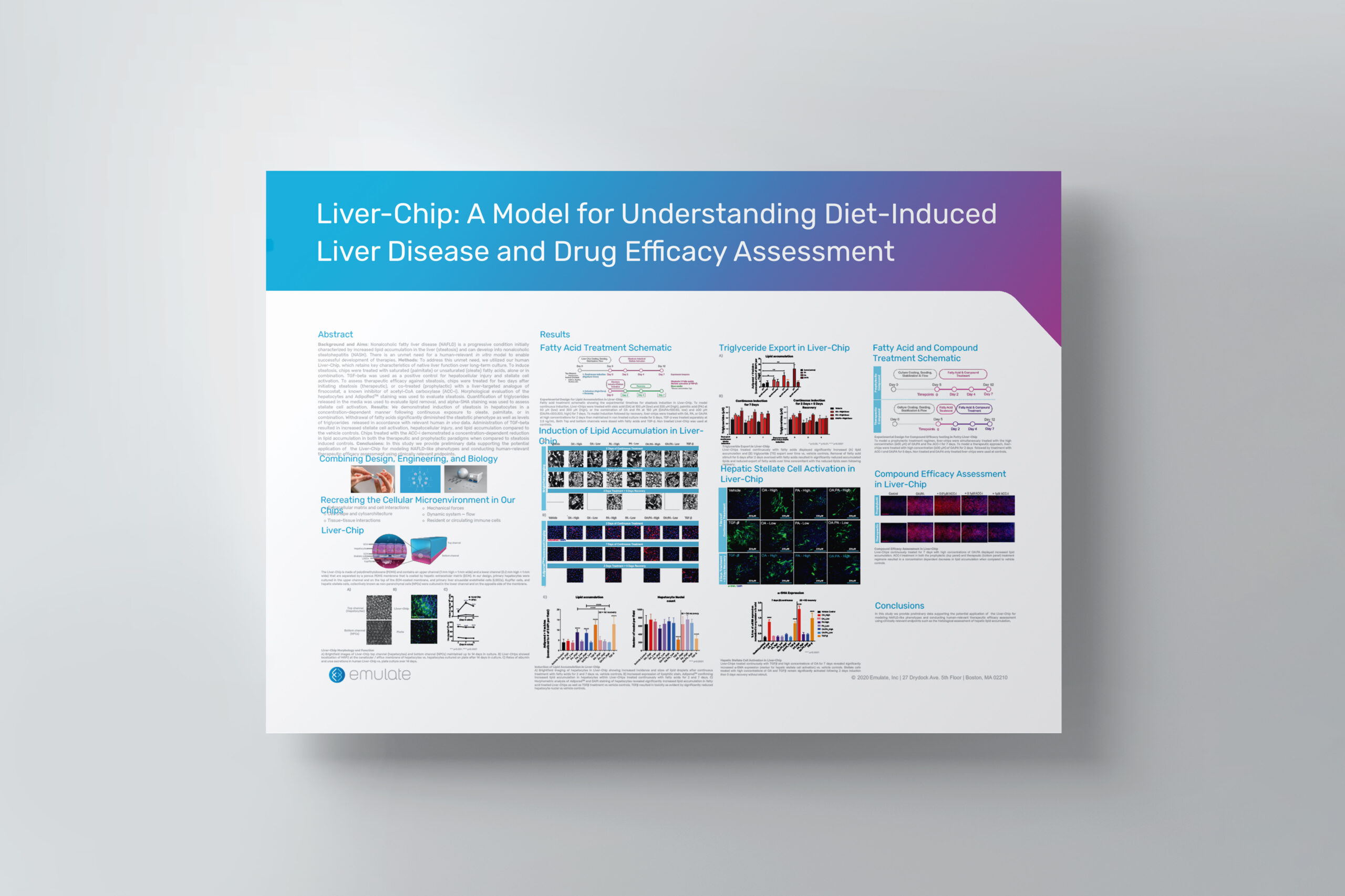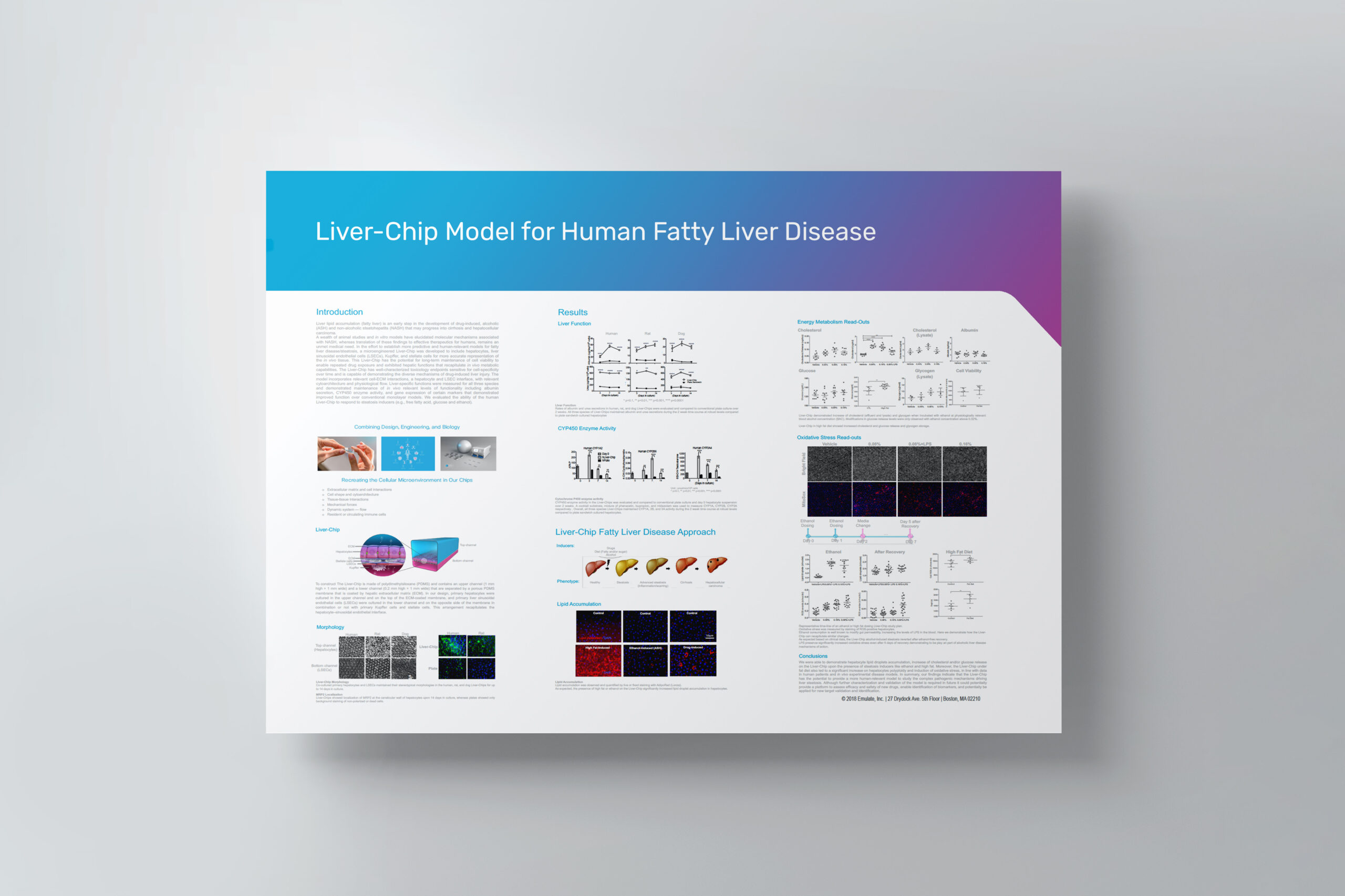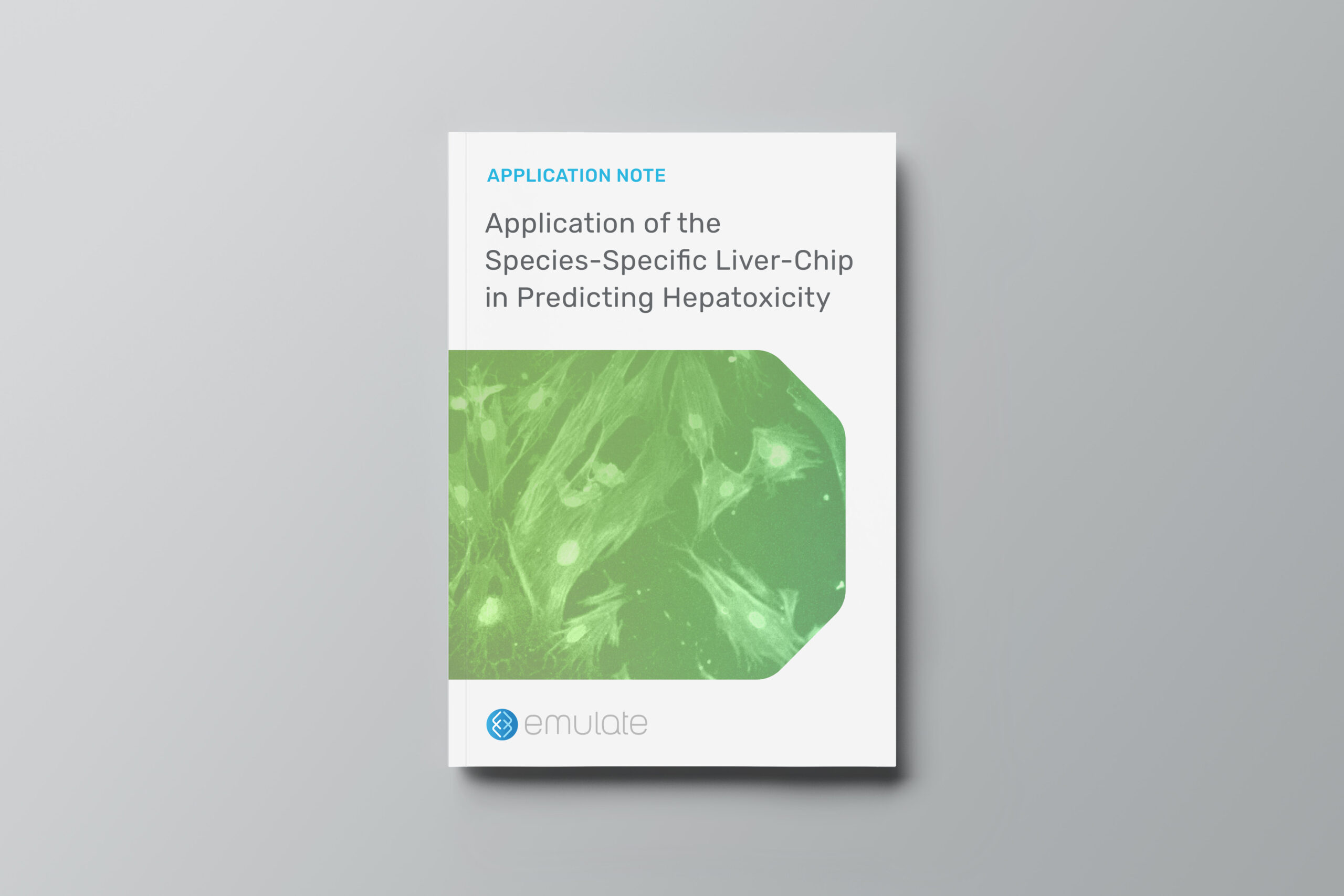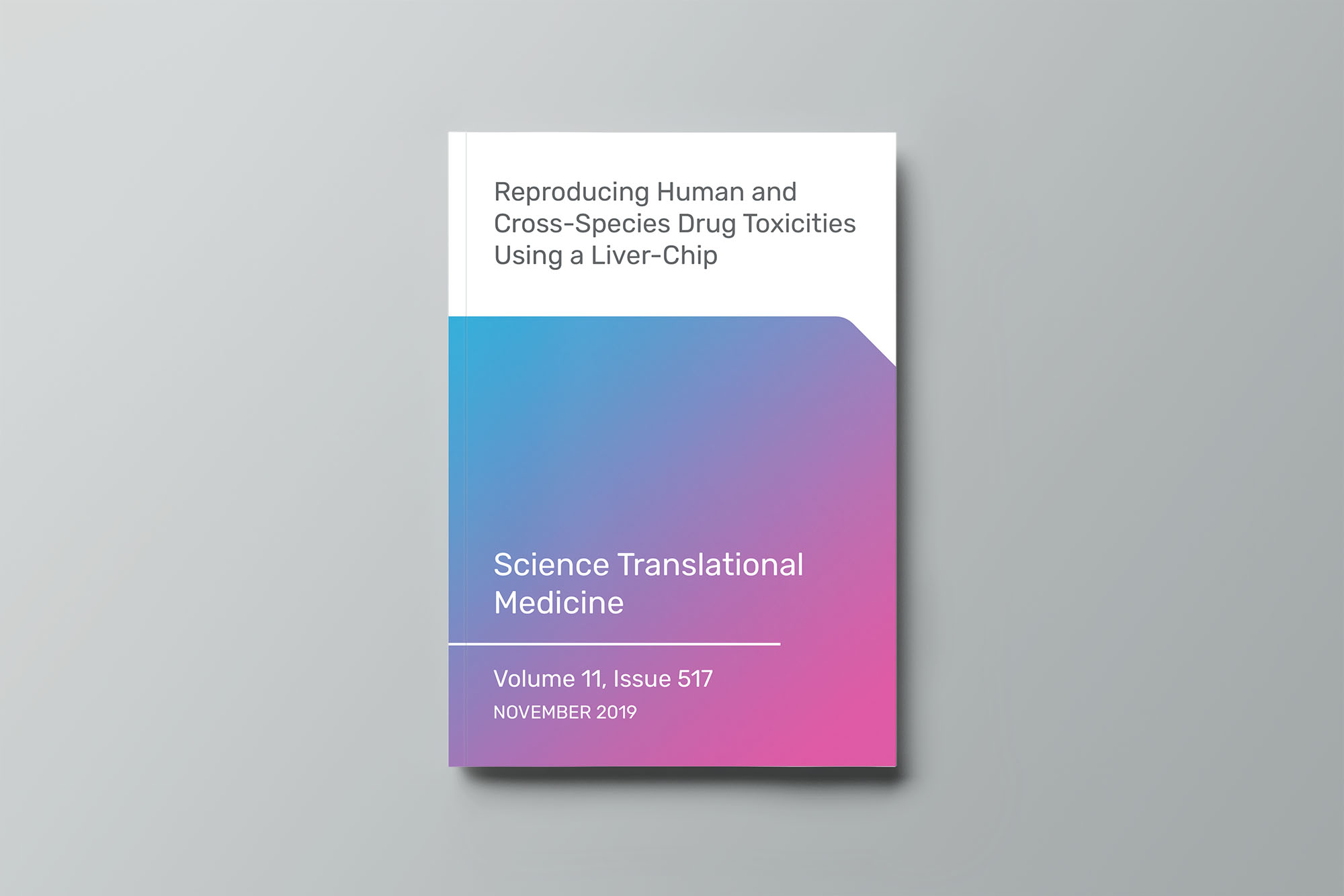Abstract
Background and Aims: Nonalcoholic fatty liver disease (NAFLD) is a progressive condition initially characterized by increased lipid accumulation in the liver (steatosis) and can develop into nonalcoholic steatohepatitis (NASH). There is an unmet need for a human-relevant in vitro model to enable successful development of therapies.
Methods: To address this unmet need, we utilized our human Liver-Chip, which retains key characteristics of native liver function over long-term culture. To induce steatosis, chips were treated with saturated (palmitate) or unsaturated (oleate) fatty acids, alone or in combination. TGF-beta was used as a positive control for hepatocellular injury and stellate cell activation. To assess therapeutic efficacy against steatosis, chips were treated for two days after initiating steatosis (therapeutic), or co-treated (prophylactic) with a liver-targeted analogue of firsocostat, a known inhibitor of acetyl-CoA carboxylase (ACC-i). Morphological evaluation of the hepatocytes and AdipoRedTM staining was used to evaluate steatosis. Quantification of triglycerides released in the media was used to evaluate lipid removal, and alpha-SMA staining was used to assess stellate cell activation.
Results: We demonstrated induction of steatosis in hepatocytes in a concentration-dependent manner following continuous exposure to oleate, palmitate, or in combination. Withdrawal of fatty acids significantly diminished the steatotic phenotype as well as levels of triglycerides released in accordance with relevant human in vivo data. Administration of TGF-beta resulted in increased stellate cell activation, hepatocellular injury, and lipid accumulation compared to the vehicle controls. Chips treated with the ACC-i demonstrated a concentration-dependent reduction in lipid accumulation in both the therapeutic and prophylactic paradigms when compared to steatosis induced controls.
Conclusions: In this study we provide preliminary data supporting the potential application of the Liver-Chip for modeling NAFLD-like phenotypes and conducting human-relevant therapeutic efficacy assessment using clinically relevant endpoints.










